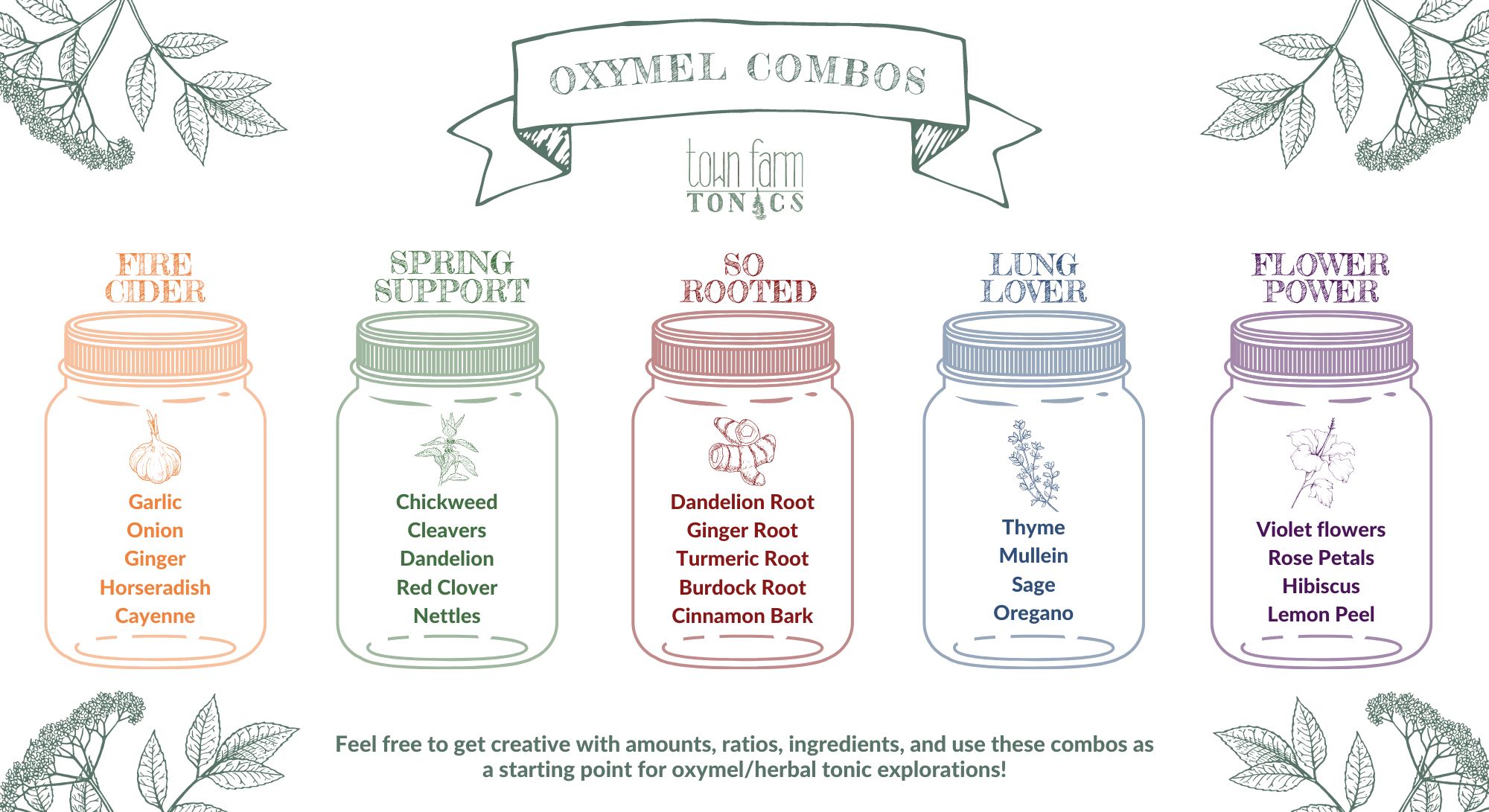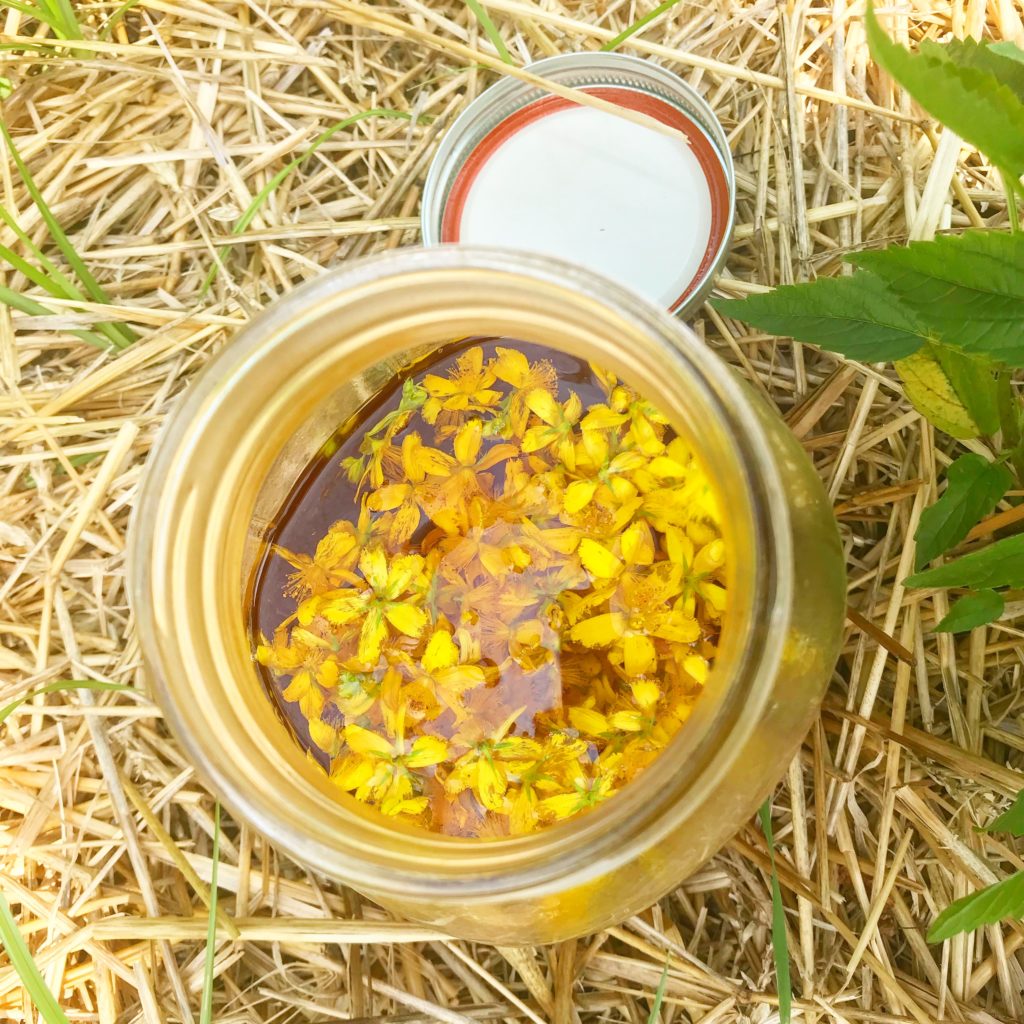Oxymel: an ancient Greek word that translates to “acid and honey.” Modern translation? The most delicious way to practice some kitchen witchin’ for the herbally curious! They are the perfect introduction to the world of herbal tonics!
Oxymels have long been used as home herbal medicine. Why? Cooking and herbalism have always been sister sciences practiced by mothers, herbalists, midwives, and healers. By blending herbs, honey, and acid, you’re left with a sweet and sour liquid that can support digestion, ease congestion, reduce inflammation, and spruce up the most boring of recipes! Traditionally, the acid used in an oxymel is vinegar. Any vinegar will do, but raw apple cider vinegar will ensure probiotic benefits and a wide range of applications for your herbal tonic concoction.
Why vinegar?
In the creation of any herbal remedy, we need extraction to take place. This ensures that a plethora of medicinal compounds, minerals, and vitamins are made available to your body. In tea, your hot water is doing the extraction. In a tincture, it’s the alcohol. Different compounds call for different “solvents”, and it so happens that vinegar makes a great solvent for vitamins, minerals, and other flavor-packed compounds!
Oxymel Benefits and Oxymel Uses
An oxymel can be used in countless ways, medicinally and culinarily, so flavor is key! And let’s be honest, it’s hard to get this wrong when you have sweet honey and sour apple cider vinega. These two are practically born to be blended! Which herbs you choose to add to your oxymel depends on how you’d like to use it… and the options are endless! Sip it straight up to ease a belly ache. Pour it over cucumbers or radishes for homemade pickles. Mix it into a margarita or mocktail. Dress your salad with it–you get the picture. It’s the herbal utility tool that you’ll wonder how you ever lived and cooked without!
Making an Oxymel
- Fill a jar of any size ¼ to ½ full of herbs (fresh or dried spices or vegetables).
- Cover the herbs with enough vinegar and honey to fill the jar–a standard ratio is equal parts honey and vinegar (though you can modify based on your palate).
- Line the rim with parchment paper under a metal canning lid or use a plastic lid (to prevent the metal from corroding). Close firmly!
- Shake until all of the ingredients are thoroughly blended.
- Place your jar away from direct sunlight and heat (a cabinet will do) for 2-4 weeks as it infuses. No need for refrigeration.
- Shake your jar whenever you remember! The more you shake it, the better your oxymel will infuse. Once a week minimum is best.
- After 2-4 weeks (a longer steep = a stronger oxymel), strain your herbs through a fine-mesh strainer. Squeeze out as much liquid as possible–that’s where all the goodness is!
- Strain that liquid a second time through cheesecloth if you have it, to avoid any bits left behind.
- Pour your oxymel into a jar. Make sure to label and date it.
- Store in a cool dark place. Refrigeration shouldn’t be necessary, but if you use a lot of fresh veggies, the water content will be higher, so refrigerate if you’d like!
Exploring Oxymel Recipes
One of the most well-known oxymels is Fire Cider, the traditional immune-supportive herbal tonic made famous by renowned folk herbalist Rosemary Gladstar. But not all oxymels are pungent and spicy. Take a peek at the following herbal tonic ideas to get your oxymel gears turning, and once you get started, let your imagination run wild!

What would YOU include in your own oxymel recipe? Let us know about your favorite oxymel combos! Share below, or tag us on social media.


Thank you for your article. Especially the 5 combinations included at the end. It’s a great reference and starting point for me! I’m planning to start with shiso, perhaps with lemon verbena or lemon balm.
Where can one find violet blossoms? I have been on the hunt for months now and have come up empty handed every time.